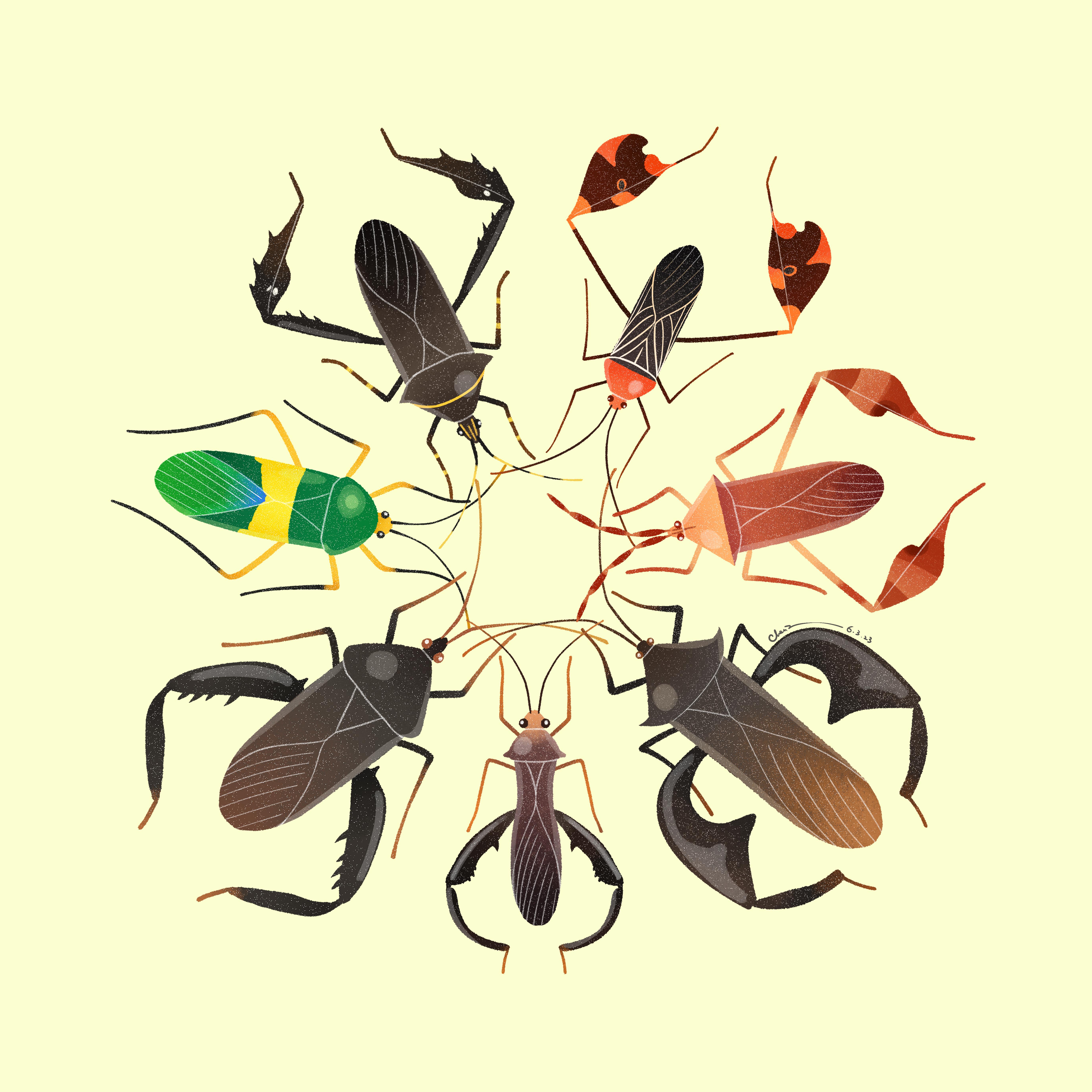
Research
We investigate biotic interactions within and across species. Within species, our primary focus is on the processes and outcomes of sexual selection, especially the evolution of weapons and contests between members of the same sex to have mating opportunities with the other biological sex. For this work, we focus on leaf-footed bugs and members of the deer family, Cervidae. We also focus on plant-herbivore interactions. We study the ways in which plant nutrition shapes the development of the insect body, primarily the feeding structures and the insect cuticle. We further test the consequences these developmental changes for insects and their host plants. If you are interested in working on these or similar questions, please get in touch.
Sexual selection. Picture the fearsome tusks of prehistoric elephants and the incredible claws of fiddler crabs. These are sexually selected weapons, and they are used to gain matings with the opposite sex by getting members of the same sex out of the way. The sizes and shapes of such weapons are stunningly diverse across taxa as well as within closely related groups. For example, the African antelope have many kinds of horns: some species have tiny spikes while others have large twisting and curving horns that may be pointing up, down, outwards, or inwards. Understanding why weapons are so diverse requires a consideration of their function. Sexually selected weapons have evolved to function in physical combat. Fascinatingly, these weapons often have been co-opted for purposes beyond their sexually selected function; in some cases they help defend animals against predators and competitors, for foraging, and more. All of these should place their own selective pressures upon weapons, further modifying their form. We also focus on trade-offs between weapons and other traits in the animal body, including testes. Such trade-offs likely shape evolutionary trajectories.
We examine both microevolution and macroevolution of animal weapons. Ultimately, our interest is on the evolutionary interplay of morphology and behaviour, and weapons and physical combat provide an outstanding opportunity to understand this interaction.
Feeding. We have discovered extreme phenotypic plasticity in the mouthparts of the leaf-footed bugs. Their straw-like mouthparts can be long or short depending upon what these insects feed upon when they are young. Our work has also revealed that mouthpart length can also evolve and varies genetically across natural populations. We are now investigating the forces that can maintain such extreme (and costly) plasticity as well as the consequences for crop pests. Do pests seek out crops that are well matched for the mouthparts they grew as juveniles? Could this knowledge help farmers by informing how they should plant different plants?
Exoskeletal Cuticle. Insect species comprise over 75% of animal species on this planet, and yet we have so much to learn about how they are constructed and how environmental factors change this process. Our investigations, in collaboration with Prof Walter Federle, have revealed that nutritional quality can have a profound influence on the insect cuticle. We are currently following up on recent findings to understand what these patterns mean for sexual selection, dispersal, and evolution.
Key Publications
Miller CW, Kimball RT & Forthman M (2024). The evolution of multi-component weapons in the superfamily of leaf-footed bugs. Evolution 78: 635–651.
Woodman TE, Chen S, Emberts Z, Wilner D, Federle W & Miller CW (2021). Developmental nutrition affects the structural integrity of a sexually selected weapon. Integrative and Comparative Biology 61: 723-735.
Allen PE, Cui Q & Miller CW (2021). Evidence of a rapid and adaptive response of hemipteran mouthparts to a physical barrier. Journal of Evolutionary Biology 34: 653-66.
Joseph PN, Emberts Z, Sasson DA, & Miller CW (2018). Males that drop a sexually-selected weapon grow larger testes. Evolution. 72: 113–122. DOI: 10.1111/evo.13387.
McCullough E, Miller CW, and Emlen DE (2016). Why sexually-selected weapons are not ornaments. Trends in Ecology and Evolution. 31: 742-751. DOI: 10.1016/j.tree.2016.07.004.
Gillespie SR, Tudor MS, Moore AJ, & Miller CW (2014). Sexual selection is influenced by both developmental and adult environments. Evolution 68: 3421-3432.
Miller CW & Svensson E (2014). Sexual selection in complex environments. Annual Review of Entomology 59: 427-445.
Miller CW (2013). Sexual selection: Male-male competition. In: J. Losos, Editor. The Princeton Guide to Evolution. Princeton University Press.
Procter DS, Moore AJ & Miller CW (2012). The form of sexual selection arising from male-male competition depends on the presence of females in the social environment. Journal of Evolutionary Biology 25: 803-812.
For more publications:
